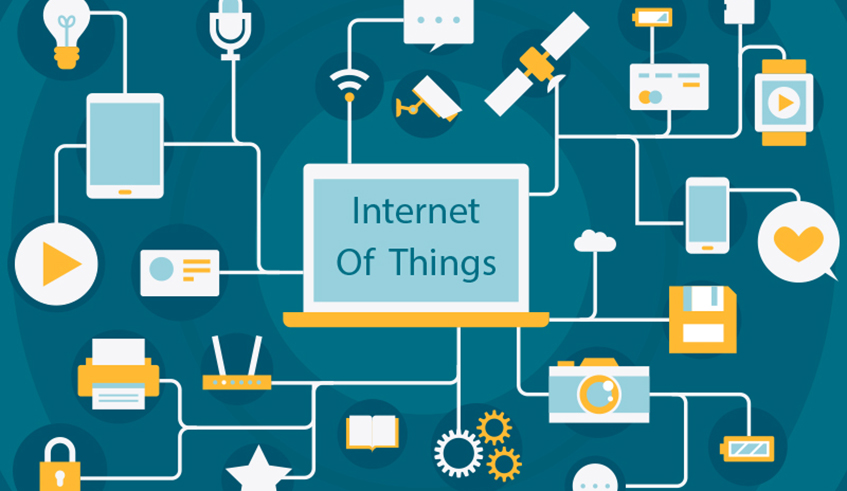

Internet of Things (IoT) has the two brainy quotes: "Every animate and inanimate object on Earth will soon be generating data, including our homes, our cars, and yes, even our bodies”—by Anthony Williams.
"Very soon, we will see inside ourselves like never before, with wearable, even internal, sensors that monitor even our most intimate biological processes. It is likely to happen even before we figure out the etiquette and laws around sharing this knowledge”—by Quentin Hardy.
To start with, what’s Internet of Things? The term ‘IoT’ refers to things that we use every day that are connected to the internet, allowing us to either control or receive data about that ‘thing’ from our smartphone or computer.
According to Stephan Haller et al, the term Internet of Things (IoT) refers to "a world where physical objects are seamlessly integrated into the information network and where the physical objects can be-come active participants in business process”.
Given that IoT isn’t so common concept to many readers, here’re examples of how we use Internet of Things in our everyday lives include:smart appliances, smart security systems, smart locks, and smart doorbells; mart home hubs, smart assistants, fitness trackers, sleep trackers and smart scales.
There are many new IoT hardware devices and software applications that are already deployed and widely used in many countries. Besides, from connected home hubs, smart thermostats, remote door locks, and all the various app-controlled appliances are useful IoT is in everyday life.
According to findings, currently there are more than two billion users of smart technologies including smart phones, home, city, business and entertainments applications. These smart object facilities allow machines to communicate with or without user intermediary means which leads to the term known as the IoT. However, all these modern techniques are creating a huge amount of structured, semi-structure and unstructured data which eventually leads to the increase in data capacity, variety of storage and processing systems.
In fact, a growing number of physical objects are being used to the Internet at an unprecedented rate realizing the idea of the Internet of Things (IoT). A basic example of such objects includes thermostats and HVAC (Heating, Ventilation, and Air Conditioning) monitoring and control systems that enable smart homes. There are also other domains and environments in which the IoT can play a remarkable role and improve the quality of our lives. These applications include transportation, healthcare, industrial automation, and emergency response to natural and man-made disasters where human decision making is difficult.
The IoT enables physical objects to see, hear, think and perform jobs by having them talk together, to share information and to coordinate decisions. The IoT transforms these objects from being traditional to smart by exploiting its underlying technologies such as ubiquitous and pervasive computing, embedded devices, communication technologies, sensor networks, Internet protocols and applications.
Over time, the IoT is expected to have significant home and business applications, to contribute to the quality of life and to grow the world’s economy. For example, smart-homes will enable their residents to automatically open their garage when reaching home, prepare their coffee, control climate control systems, TVs and other appliances. In order to realize this potential growth, emerging technologies and innovations, and service applications need to grow proportionally to match market demands and customer needs.
Indeed, using Internet of Things (IoT) has the potential to have a profound impact on our daily lives, including technologies for the home, for health, for transportation, and for managing our natural resources. The Internet was largely driven by information and ideas generated by people, but advances in sensing and hardware have enabled computers to more easily observe the physical world.
Undoubtedly, IoT would help us work smarter, live smarter, and gain complete control over our lives, but it’s also supporting our wellbeing behind the scenes.
In addition to our smart home devices, IoT is an essential technology in business and industry, as it gives businesses a real-time glimpse into the inner workings of their company’s systems. From the factory floor to the customer’s door, IoT delivers insights into everything from machine performance to supply and chain and logistics operations. IoT allows companies to automate processes and save money on labor. It also reduces waste and improves service delivery, making it less expensive to manufacture and deliver goods and providing transparency into customer transactions. It allows companies to reduce costs, increase safety, and improve quality from end-to-end, which translates to a win-win for everybody. As a result, consumer goods are less expensive to produce, shipping is more predictable, and companies can grow, stimulating our economy while delivering a sense of satisfaction.
While IoT aims to improve the quality of life—by connecting many smart devices, technologies, and applications—security and privacy are the top priority for IoT applications followed by performance, reliability and management. Next article will discuss challenges of IoT and how best it can be regulated without stifling it.
Of course, IoT is a remarkable development.
The writer is a law expert.


